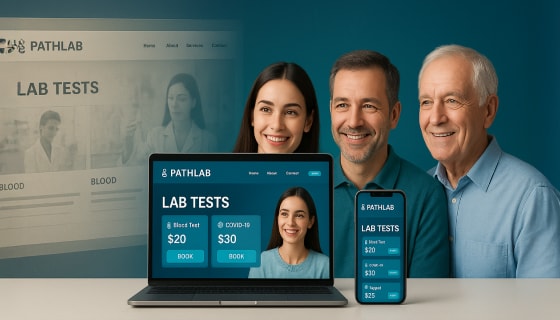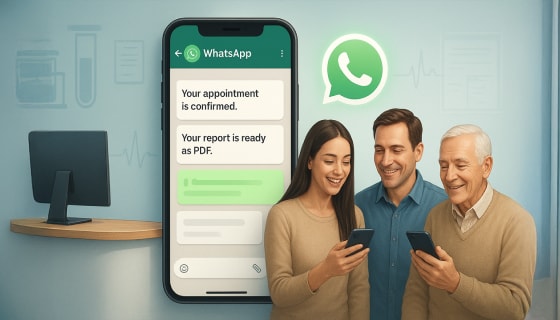Chasing likes and followers on social media is like counting pennies in a piggy bank; it might feel good to see the numbers add up, but in the end, it doesn’t translate to real wealth. The truth is, focusing solely on social media metrics like likes and followers doesn’t always reflect the proper health of your business. What matters, especially in digital marketing for healthcare, is how well your online presence drives bookings, inquiries, and repeat visits – the metrics that ultimately determine your clinic’s growth.
In this blog, we’ll unpack why likes and followers shouldn’t be your clinic’s primary focus and how tracking the right metrics in your digital marketing efforts can help you grow a strong, sustainable practice. Let’s dive into what moves the needle for your clinic’s success.
The Problem with Focusing Only on Social "Likes"
Social media makes it easy to get caught up in the excitement of likes, shares, and follows. Clinics often measure their success based on these metrics, thinking that an increase in likes equals a boost in business.
While likes indicate that your content is being seen and perhaps even appreciated, they fail to tell the whole story. A like doesn’t mean that the person engaging with your post actively seeks your services or considers your clinic for their healthcare needs. This focus on vanity metrics can misguide your digital marketing strategy. By relying too heavily on likes, clinics risk overlooking the key elements contributing to real growth: patient acquisition, retention, and conversion. Regarding digital marketing for healthcare, the quality of interactions, not just the quantity of likes, moves the needle for your practice.
Let’s move beyond likes and look at the real metrics that drive business growth. These numbers directly impact your clinic’s success and help you focus on what matters most.
Real Metrics That Show Business Growth
To truly understand how your digital marketing efforts drive success, you must focus on key performance indicators (KPIS) beyond vanity metrics. These metrics show how well your clinic engages with patients and highlight how effectively you convert online interactions into tangible business outcomes.
Bookings and Appointments
One of the clearest growth indicators is your clinic’s number of bookings or appointments. This is where your digital marketing efforts truly pay off. If your online presence effectively engages potential patients, it should drive them to take action, whether scheduling a consultation, booking an appointment, or signing up for services. By tracking how many people are converting from website visitors or social media followers into patients, you can assess the effectiveness of your digital marketing strategy.
Inquiries and Leads
Another crucial metric is the number of inquiries or leads your clinic generates. More inquiries typically mean your content, SEO, and ads are hitting the mark. Monitoring the quality and volume of these leads will give you a solid indication of how well your marketing campaigns are performing. Platforms like Google Ads or Facebook Ads offer lead generation forms that can track the number of leads generated from your campaigns and measure their quality.
Repeat Visits and Patient Retention
Repeat visits are critical to evaluating patient retention, a metric that’s often more valuable than acquisition. High retention rates indicate that patients are satisfied with their care and are returning for follow-up visits or additional treatments. To track repeat visits, integrate your website with a patient management system (PMS) that stores patient data and records the frequency of their appointments. You can also track lifetime value (LTV), a key indicator of retention success.
Website Traffic and Engagement
Tracking organic search traffic through Google Analytics helps you understand which keywords drive visitors to your site. Pay attention to bounce rates, as high bounce rates may indicate that your landing pages aren’t engaging enough or that your SEO targeting needs refinement. Additionally, user engagement metrics like time on page, pages per session, and scroll depth can give insight into how users interact with your content.
Conversion Rates
Conversion rate optimisation (CRO) involves tracking conversion rates to help you understand how well your website turns traffic into appointments. CRO involves analysing website visitors’ behaviour and improving the elements on your site. Tools like Google Optimize or Optimizely can help you run A/B tests to compare different versions of your landing pages and identify which design elements (e.g., CTAs, form placements, or page layouts) result in higher conversions.
How to Balance Brand Awareness and Patient Acquisition
Finding the right balance between building brand awareness and driving patient acquisition is essential for your clinic’s success. Both areas work together to create a sustainable growth strategy. Let’s explore how to strike that balance effectively.
Building Brand Awareness
Brand awareness campaigns help establish your clinic’s presence and inform potential patients of your services. Here’s how you can focus on building awareness:
- Social Media Advertising: Run campaigns on platforms like Facebook and Instagram to introduce your clinic, showcase services, and build trust.
- Content Marketing: Publish educational content (blog posts, videos, infographics) that demonstrates your expertise and provides value to your audience.
- SEO: Optimize your website to ensure that when people search for healthcare services in your area, they find your clinic.
- Local Visibility: Use local SEO to rank for searches like “best family clinic near me” to increase your clinic’s visibility in your geographic area.
Driving Patient Acquisition
Once you’ve raised awareness, it’s time to drive action. Here’s how to turn awareness into real conversions:
- Pay-Per-Click (PPC) Advertising: Use Google Ads to target keywords related to your clinic’s services. For example, ads for “urgent care” or “cosmetic surgery” can attract patients actively looking for those services.
- Retargeting Ads: Serve targeted ads to users who have visited your site but haven’t yet made an appointment, encouraging them to return and take action.
- Landing Pages: Create dedicated landing pages with clear calls to action (CTA), such as “Book Your Appointment” or “Get a Free Consultation.”
- Offers and Promotions: Use limited-time offers, such as discounts for first-time visitors, to create urgency and prompt immediate action.
Integrating Both Strategies
Brand awareness and patient acquisition work best when integrated into a cohesive strategy:
- Sales Funnel: Drive traffic from brand awareness campaigns to high-conversion landing pages designed to book appointments or consultations.
- Social Proof: Leverage testimonials, patient reviews, and success stories to build trust and encourage potential patients to take the next step.
- Email Marketing: Use an email nurture campaign that starts with value-driven content and transitions into appointment scheduling or special offers.
Combining these strategies creates a balanced, effective marketing plan that brings both short-term results and long-term growth.
Practical Steps for Implementing a Balanced Marketing Strategy
Now that we’ve explored how brand awareness and patient acquisition work together, let’s break down actionable steps your clinic can take to implement this strategy:
Assess Your Current Strategy
Start by evaluating your existing marketing efforts to understand what’s working and needs improvement. Then, look at how you measure brand awareness and patient acquisition, such as tracking social media engagement, website traffic, and conversion rates. This will give you a clear picture of where to focus your energy moving forward.
Define Your Marketing Goals
Setting clear goals for brand awareness and patient acquisition is essential. For brand awareness, your goals include increasing social media engagement or improving organic search rankings. For patient acquisition, focus on measurable outcomes like the number of online bookings, consultations, or leads generated from paid ads. Having defined goals will help you track progress and adjust tactics as needed.
Choose the Right Tools
Use the right tools to track and optimize your marketing strategy. Google Analytics can help you monitor website traffic and user behavior, while CRM software will track lead generation, conversions, and patient retention. Social media analytics are also crucial for assessing how your content is performing and driving engagement, helping you adjust your approach for maximum impact.
Create a Unified Content Strategy
A well-rounded content strategy should balance brand awareness and patient acquisition. Focus on creating educational content, like blog posts or videos, that builds brand awareness and establishes your clinic as a trusted authority. Simultaneously, develop content with clear calls to action that encourage visitors to take the next step, whether booking an appointment or requesting a consultation.
Regularly Review and Adjust Your Strategy
Marketing is an ongoing process, so it’s essential to assess the effectiveness of your strategy regularly. Check the performance of brand awareness efforts (social media engagement, traffic, impressions) and patient acquisition campaigns (appointments, inquiries, repeat visits). Based on performance data, make adjustments to continuously improve and align your strategy with your clinic’s goals.
Conclusion
We all know how satisfying it feels to see those likes and follows pile up. But let’s be honest – they don’t tell the whole story of your clinic’s success. The magic happens when you turn that online attention into something more meaningful: actual patients and long-term relationships.
Instead of chasing numbers, focus on what counts – a strategy that balances raising awareness with bringing in patients. At ZealousWeb, we’re here to help you with all your social media advertising and paid ad campaigns, ensuring you’re tracking the right metrics and driving real results. Start focusing on what matters, and let us help your practice grow in ways that make a real impact.














